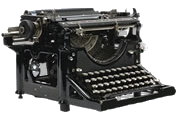Sergeant Alexander Woollcott (1887 – 1943) wrote this article so that his New York readers (whom he had not addressed since signing on with the Doughboys) would know the key roll Corporal Harold Ross (1892 – 1951) played as Managing Editor at the Paris offices of The Stars & Stripes. Anyone who glances at those now brittle, beige pages understands how sympathetic the The Stars & Stripes and their readers were to the many thousands of French children orphaned by the war; Woollcott makes it clear that it was Harold Ross who was behind the A.E.F. charities that brought needed relief to those urchins.
It seems certain that no man in the A.E.F. had a greater influence on it’s thought and spirit…The men who worked with him on The Stars & Stripes considered him the salt of the earth.
To read another W.W. I article by Alexander Woocott, click here.
